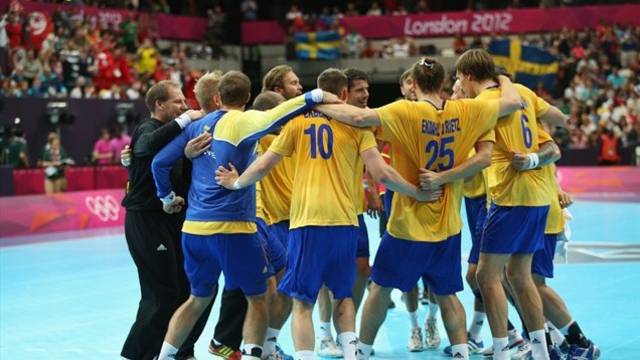Warm Up.
Warming-up is performed before a performance or practice that helps to avoid injuries and to be prepared for any phisical activity that requires an special effort.
We can define then warming as "a series of exercises that prepare the body physically, physiologically and psychologically to make a more intense effort back in top condition."
Progresive: you should start slowly the exercise and increase it little by little.
· Fitted/ adapted : it will be in order the next exercise or spot.
· Complete : you should work out the main muscles and joints.
· Efficient : the warm up carries out for its objective.
Types:
General: Exercises of all kinds, , joint movements, coordination exercises, running etc..
Specific: is one that is made for a specific purpose and perfectly determinated action.
Factors:
Duration
Intensity and progression
Repetitions
Pauses
Factors of a good warm up:
Factors of a good warm up:
Continous running
mobilize different body segments
stretch
alternate muscle groups working
The effects in our body:
- Your temperature increases
- Your heart rate increases
- Your breath rate increases
- Your reaction time will be better
- The concentration will be better
Characteristics:
- Progressive: you should slowly start the exercise and increase it little by little
- Fitted/adapted: it will be in order the next exercise or sport
- Complete: you should work out the main muscles and joints
- Efficient: the warm up carries out for its objective.
Heart rate:
Normal resting heart rate : is between 50 and 100 beats per minute. However, we must detail some aspects that alter your state.
maximum heart rate : The maximum frequency that can reach the heart with a high exercise depends on the age and can be calculated using the formula.
Maximum heart rate = 220 bpm - Age
UNIT 2:PHISICAL FITNESS.
What are phisical skills:Those factors reached by training in highest level of development.
performance in sports.
Basic phisical qualities are:
-speed:Speed: ability to perform motor actions in the shortest possible time.-endurance/stamina:physical and mental ability to support fatigue during long efforts and / or
recovery faster after the effort.
other definitions:
• Support for the maximum time possible high intensity efforts.
• Maintain the highest intensity possible in long-term efforts.
• Recover as soon as possible after we have led efforts fatigue.
• Hold for as long as possible the concentration and the correct execution of sportive
technique.
Types od endurance:
-Aerobic:Aerobic endurance has the ability to withstand long-term efforts and low or medium intensity withsufficient oxygen.
The heart rate ranges between 130 and 160 pm. The work is done so at balance between intake and output of oxygen.
-Anaerobic:We can call anaerobic endurance to the capacity to perform for as long as possible intense effortswithout oxygen.(LOW RESISTANCE)
Types:
-Latic:between 10 s and 3 min
-A-latic:between 1min and 10 min
Effect of stamina:
- With aerobic training increases cardiac cavity,
- With anaerobic training increases the thickness of the muscle fibers of the heart.
- Avoid deseases
- It turns on dormant (inactivos) capillaries and makes new ones,
- It expands lung capacity and set up new alveoli.
- It activates metabolism in general.
Methods of training:
-Continuous running:is run continuously from 20min to 40min with pulses/beats between 140 and 160 p / min with a steady pace.
-Fartlek:consists of running continuously but varying pace in different sections.
-Interval training:the efforts and the breaks have to be measured accurately.
-Circuit training:It consists of a series of exercises consecutively and
rationally ordered stations or posts, so they do not work the same muscle groups in two
consecutive stations/stages/post
-strength:neuromuscular ability to beat external or internal resistance/load thanks to muscle
contraction. It could be static (isometric) or dynamic (isotonic strength).
-flexibility:maximum extensibility of a movement in a given joint.
-Muscular elasticity, which is the ability of the muscle to lengthen and shorten without being
deformed and to return to its original shape.
-Joint mobility, which is the degree of movement of each joint. And it varies in every joint and
every person.
Factors:
-gens
-sex
-age
-Type of work
-The time of day
-Ambient temperature
-temperature of the muscle
-degree of the muscle fatigue
-training
Considerations to take into account in the work of flexibility:
- The work of flexibility must be preceded by a good warm up to prevent injury and maximize performance.
- To work flexibility the person has to be relaxed
- The person cannot just mechanically repeat the work identified by the teacher, but must
internalize and feel sensations of his own body and function of them seek proper stretching.
- To improve the flexibility you need to use exercises that lead to muscles and joints to their
highest dot, logically using appropriate methods.
- Flexibility exercises should be performed smoothly and for a prolonged time.
- The most important work of flexibility is the continuity and regularity, as flexibility
that is quickly lost with inactivity.
Importance of flexibility and the advantages:
́ll performing much better and easier actions and gestures of their specialty.
having good flexibility positively affects health in several ways:
- It helps the muscle to recover better after exercise.
- Facilitates injury rehabilitation.
- Helps to maintain proper posture and balance.
- Eliminates postural pain.
- Elderly people with good flexibility, delay the aging process of the joints
-It helps to avoid muscle type injuries.
Types of flexibility:
Active: it ́s produced by the action of your muscles.
Passive: the gravity or other sternal strength helps to the action. Your mate help
you to stretch hamstrings.
Static: there isn ́t movement
Dynamic: there is movement













